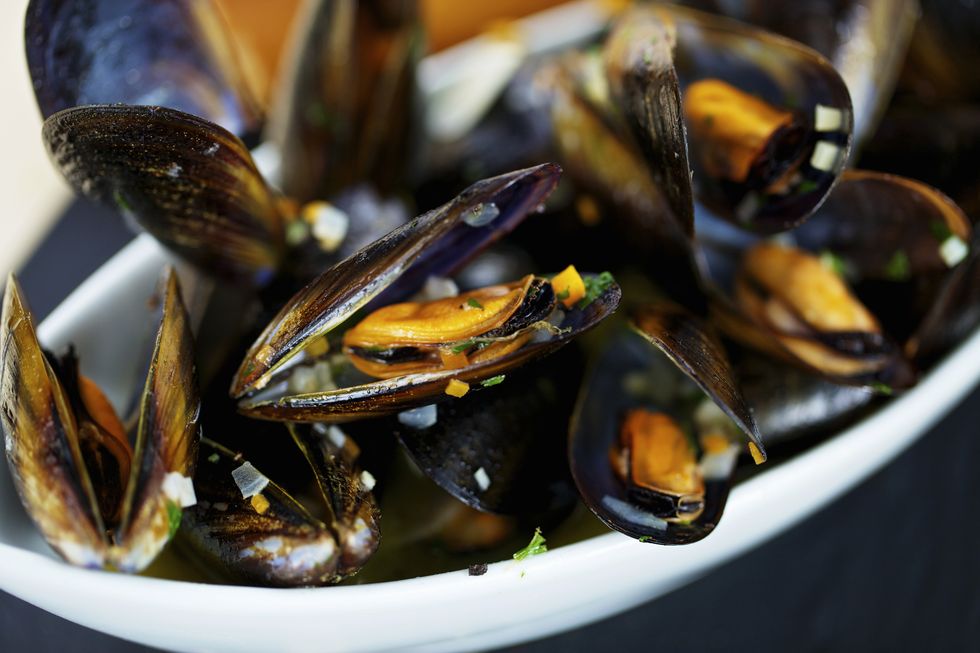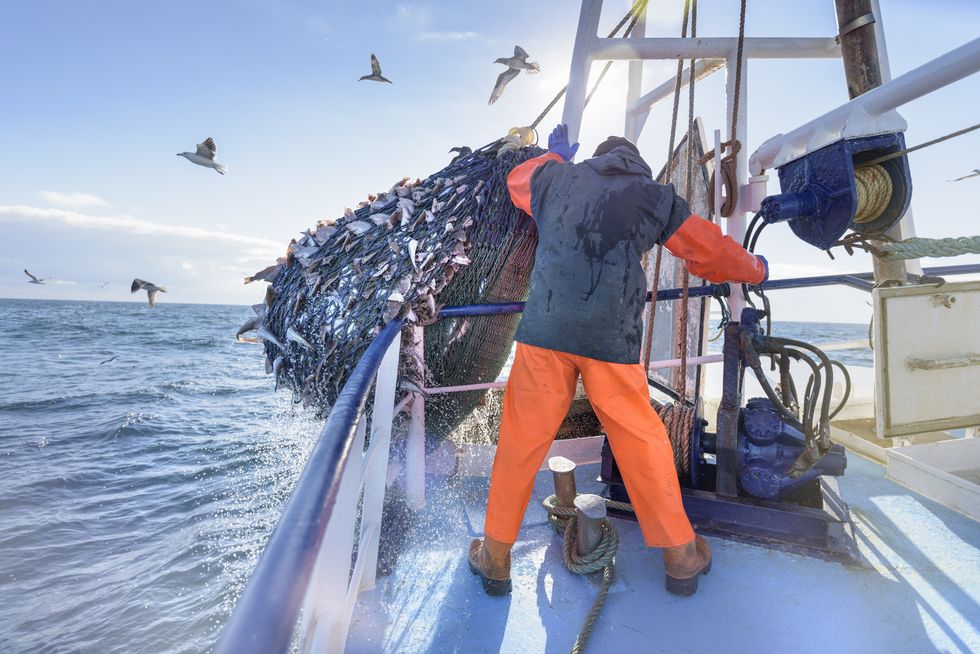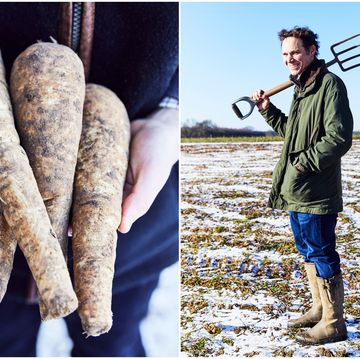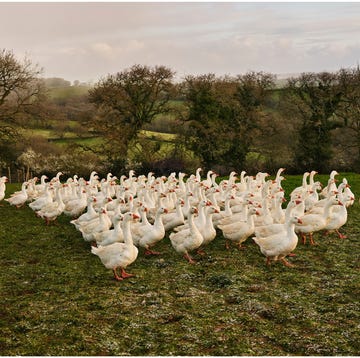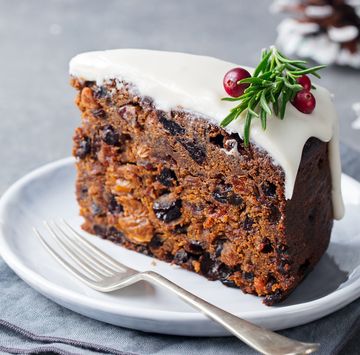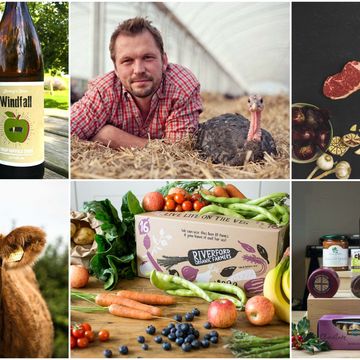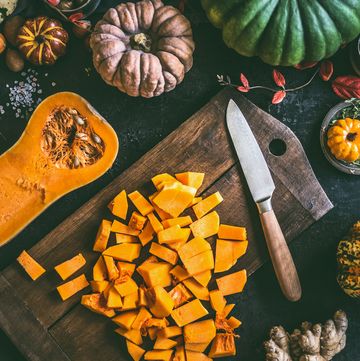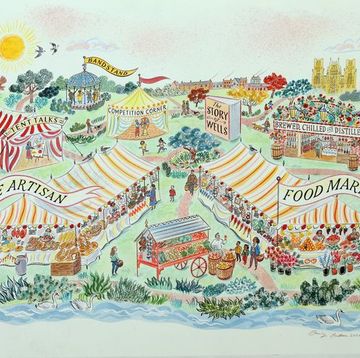• How to eat fish sustainably in the UK and which types of fish are best for the oceans and the environment.
• Where best to buy sustainable fish and what labels to look out for in the shops.
• The most environmentally-friendly and healthy food swaps for the UK's favourite fish dishes.
Fish is one of the most versatile foods around, coming in such a wide variety of species, flavours and textures.
It also hosts with a wealth of heath benefits. Filled with nutrients, fish has been scientifically proven to lower your risk of heart disease, protect against dementia, defend your eyes against certain diseases and provide an excellent source of Vitamin D.
What's more, in a recent study by the University of Leeds which explored the connection between diet and the menopause, scientists found that eating a diet rich in oily fish can delay the onset of the menopause by up to three years.
There are clearly so many great reasons to eat fish, but is our consumption of this delectable food having a negative impact on our planet?
According to the Marine Conservation Society (MCS), overfishing poses a real threat to marine wildlife and habitats, with 90% of world fish stocks already fully or over-exploited from fishing. This matter isn’t helped by pollution and climate change.
In light of this, Countryliving.co.uk spoke to Rajina Gurung, the seafood sustainability advocate at the Marine Conservation Society. We wanted to know the most eco-friendly ways to eat fish which cause the least damage to the environment so that, ultimately, we can enjoy the taste without the guilt...
MOST SUSTAINABLE TYPES OF FISH IN THE UK
“We recommend that the best species of fish to eat are from the most sustainable fisheries and farms and caught in an environmentally-friendly way, such as those that are green-rated on the Marine Conservation Society’s (MCS) Good Fish Guide,” Rajina said.
Also choosing to eat a wider range of fish is good for reducing pressure on individual fisheries and can help boost sustainability.
Here, she reveals the 10 most eco-friendly types of fish to eat for British consumers...
1. Dab, seine netted in the North Sea
2. Marine Stewardship Council (MSC) certified hake from Cornwall
3. MSC certified herring from Irish, Celtic and North Seas, SW Ireland and Eastern English Channel
4. Mackerel, handlined in the southwest of England, and MINSA (Mackerel Industry Northern Sustainability Alliance) North East Atlantic MSC certified
5. Megrim from the Northern North Sea and West of Scotland
6. UK rope grown mussels
7. Brown crab from Devon Inshore Potting Area, Western Channel
8. Queen scallops from the Fal Estuary, fished by traditional sail and oar method
9. Pollack handlined from the Celtic sea
10. Sole from Dover in the Western Channel
They all sound delicious.
BEST ALTERNATIVES TO UK FISH FAVOURITES
“In the UK we are too reliant on the ‘Big Five’: cod, haddock, tuna, salmon and warm-water prawns," Rajina said. "One of the easiest ways to choose more sustainable seafood is to try alternative species that have been caught or farmed responsibly."
1. Swap cod and haddock for hake or coley
Instead of cod, Rajina suggests opting for hake or coley, for example. "Once cooked, coley turns white and looks and tastes as good as cod," she said. "Hake is closely related to cod and has a mild flavour with firm textured meat. European hake is found in waters close to home and the northern stock is at a record high."
2. Swap salmon for rainbow trout
Though salmon is a firm favourite in Britain, you may want to choose an alternative now and again, such as rainbow trout that has been farmed in ponds. Rainbow trout is delicious, healthy and has a similar, though lighter, taste than salmon. Another bonus point is that trout has almost a third of the fat of salmon at just 135 calories per 100g.
3. Swap tuna for mackerel
Swap tuna for MSC certified mackerel which is a great source of omega-3.
4. Swap prawns for UK rope grown mussels
"Give warm-water king and tiger prawns a rest and choose UK rope grown mussels which are a very sustainable choice as the method of farming is environmentally friendly," Rajina said. "If you buy prawns, choose small cold-water MSC certified Northern prawns which are a better choice than warm-water prawns.
"By choosing from a wider range of fish we’ll be putting less stress on individual fisheries."
BEST PLACES TO BUY FISH
When buying fish, always look out for information on whether it has been sustainably sourced. You need to find out where and how your fish has been caught or farmed to know you are eating sustainable produce.
"Look for sustainability information on labels and at the fish counter," Rajina said. "Don’t be afraid to ask questions. Also buying local means that there are lower food miles, a reduced carbon footprint, more diversity and choice."
Finding out this information is also a good way to ensure your fish is tastier, fresher and an all-round better quality. Traceability and provenance are key.
"It’s also good for the economy and helps support local fishermen," she said. "The UK are the ninth largest importer of fish in the world with around 70% of the seafood value entering the UK fish supply chain coming from overseas.
"By choosing more sustainable sources and buying local, you can help reduce wild caught fish being discarded as dead because they have less value."
HOW OFTEN SHOULD WE EAT FISH?
Seafood consumption in the UK is comparatively low at around 161g per week per person, half that of many European countries and recommended by Government.
The MCS recommends that, if you are going to eat fish, then choose the sustainable, green-rated kind, eat amber-rated seafood less often, and avoid the red-rated type altogether – these include threatened or endangered species and fish from damaging fisheries or farming systems.
Just as with fruit and vegetables, seasonality is important for wild-caught fish. Different species of fish breed and mature at different paces and times of year. Make sure, when buying fresh fish, you avoid young fish and species that are in their spawning season. This will enable the sea life to reproduce, helping increase fish stock levels.
Seasonality does not apply to farmed seafood, or frozen or processed fish, as you can’t really know when the fish was caught.
TOP TIPS FOR EATING FISH SUSTAINABLY
1. Visit the Good Fish Guide here to find out more on green-rated, amber-rated and red-rated seafood, plus how to source sustainably.
2. Download the free Good Fish Guide app, available on android or iPhone. Otherwise, you can request a free copy of the Pocket Good Fish Guide. The app also has recipes from celebrity chefs such as Raymond Blanc, Hugh Fearnley-Whittingstall and Tom Aikens, as well as useful information on seasonality, minimum sizes and labelling.
3. Whether you’re eating out or buying from the fishmonger or supermarket, always look for information or ask about where and how your fish is caught and farmed. This is crucial to understanding the sustainability of fish.
4. Choose fish caught using methods with lower environmental impacts such as hand-lining or potting, or fish farmed in well-managed/low-impact production systems such as rope grown mussels. Capture method or fish farming types differ hugely and can mean the difference between a very low impact and very high impact on other marine life.
5. When buying tuna, skipjack tuna – which is primarily canned – caught with the most selective gear such as pole and line, hand-line or troll is the best choice.
6. Look for eco-labels on packaging such as the Marine Stewardship Council (MSC) 'blue tick' logo for wild capture fisheries. For farmed fish look for the Aquaculture Stewardship Council (ASC) logo or Organic certification. Certifications will not only tell you about the sustainability of the fishery or farm, but also help ensure the traceability of the product.


